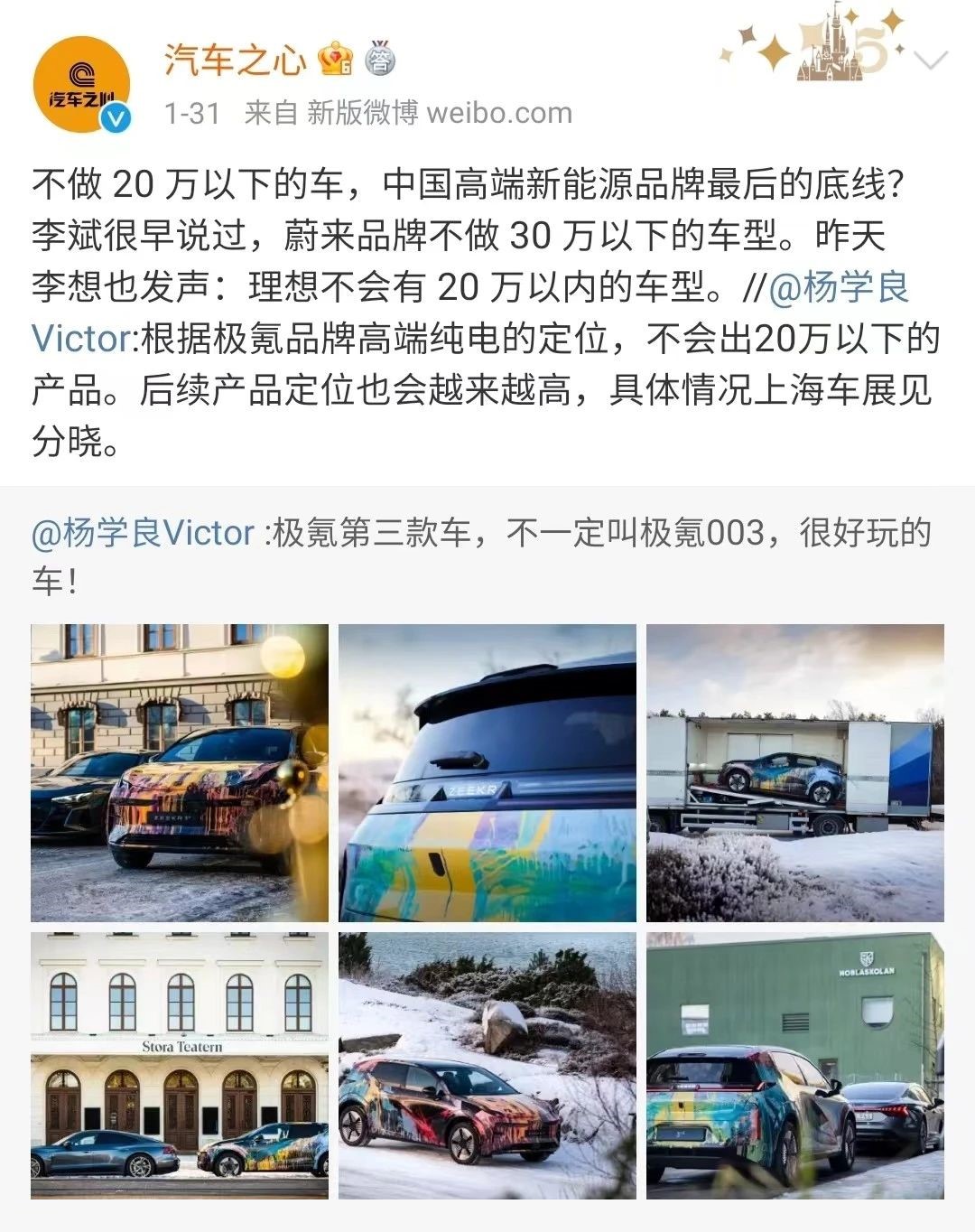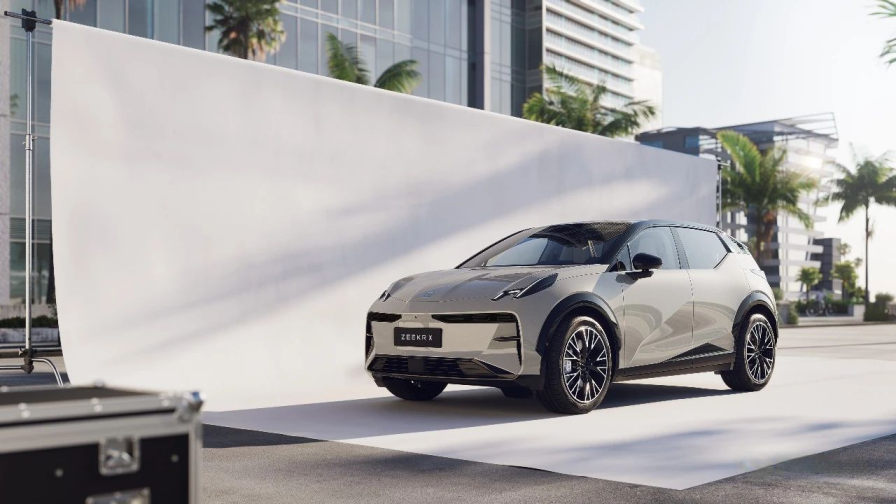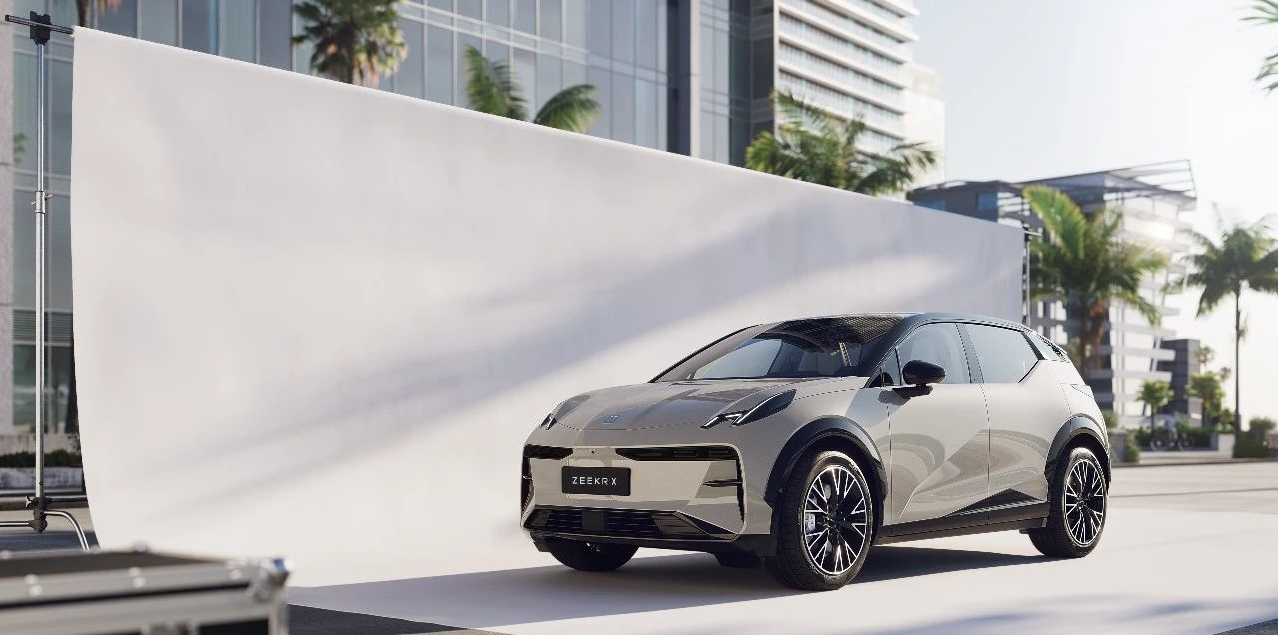Author: Zheng Senhong
For new car makers, anxiety caused by losses and sales pressure is spreading.
Li Bin criticized eight internal problems in an internal letter, Lei Jun delivered an internal speech to boost the morale of the car-making team, and Musk explicitly increased the competition strategy of ” reducing costs and increasing quantity”.
In the face of such challenges, Xpeng and Li Auto have made a consistent choice-stabilize the high-end market.
On January 30th, Yang Xueliang, vice president of Geely, and Li Xiang, CEO of Li Auto, responded to the latest product planning on social media.

“Xpeng positions itself as a high-end pure electric brand and will not produce products priced below 200,000 yuan.”

“Ideal L6 and L5 will stick to the price range of 200,000 to 300,000 yuan. Ideal will not have models priced below 200,000 yuan.”
The commonality between the two is that Xpeng and Li Auto are positioning themselves as high-end brands and regard “200,000 yuan” as the bottom line of their products. This not only means that Xpeng and Li Auto publicly relinquish the electric vehicle market below 200,000 yuan, but also once again squeeze the mid-to-high-end market.
Data from the China Passenger Car Association shows that in the domestic electric vehicle market in 2022:
-
The penetration rate of the 100,000-200,000 yuan price range is 22.7%;
-
The penetration rate of the 200,000-300,000 yuan price range has reached 49%, which can already compete with fuel vehicles;
-
New energy vehicles priced above 300,000 yuan also have close to a 30% penetration rate.
Behind this market, why has 200,000 yuan become the bottom line for Xpeng and Li Auto?
Why don’t Xpeng and Li Auto enter the low-price market, which is larger?
In the Chinese market, 150,000 to 200,000 yuan has always been the mainstream consumer price range for automobiles.
The increase of new energy vehicles in 2022 is mainly driven by the price range of 150,000 to 300,000 RMB.

According to the data from China Association of Automobile Manufacturers, sales growth in the price range of 150,000 to 200,000 RMB increased by 210%, 20,000 to 25,000 RMB increased by 141.8%, and 25,000 to 30,000 RMB increased by 117.9%.
This indicates that as pure electric vehicle technology becomes more mature, the dualistic pattern of high-end and low-end new energy vehicle market is being broken, and the development trend is accelerating from a “dumbbell-shaped” to a “spindle-shaped” structure.
The market of new energy vehicles priced between 150,000 to 200,000 RMB will become a new growth and outbreak point for Chinese auto brands, which has become a consensus in the entire industry.
A more comprehensive proof is that in 2022, the sales performance of the WEY brand is often overtaken by “cost-effective” car companies such as NETA and Leapmotor, and mid-to-low-end car models are becoming the mainstay of the new energy vehicle market.
Cui Dongshu, Secretary-General of the China Passenger Car Association, believes that currently, car models priced below 200,000 RMB account for more than 50% of sales in China’s new energy vehicle market, and it is expected that the market share of car models priced below 200,000 RMB will reach more than 70% in the future.
From the perspective of market demand, why doesn’t Ideal and Xpeng continue to extend their ambitions downwards? The answer may lie in the “incapability” from both cost and profit perspectives.
First, it is “incapable” to set the price.
Generally speaking, there are two pricing reference methods for car companies:
One is the “benchmark price of competing products method”, which means that car companies will use competing products as a reference to set the price of their own products. BBA, such as Audi, is a typical case. Their pricing principle is very simple- price slightly lower than the same level of competing products such as BMW and Mercedes-Benz.
Second, the “financial analysis method”, which means that based on the cost of BOM and adding research and development, manufacturing, sales, and other costs and profits, a cost price is obtained. With the increase of sales volume, various costs will be diluted, and the profit per vehicle will increase.
This is the cornerstone of the new forces’ belief in the 100,000 RMB threshold theory–spreading research and development, sales, personnel expenses, and other costs through sales volume. However, it is not an easy task to achieve such sales volume into the market of less than 200,000 RMB.The price range is reduced to below 200,000 yuan, which is the battleground for traditional brands.
Take the ranking of annual sales of pure electric vehicles between 100,000 and 200,000 yuan in 2022 as an example. BYD Yuan PLUS, Dophin, and Qin PLUS EV occupy the top three positions on the list, and the data for insured vehicles in 2022 are all over 150,000. Following them are two explosive models of Aion Y and Aion S from Aiways.
On this list, except for NETA U barely squeezing into the top ten, it is almost the world of traditional brands.
The reason is that, under the same configuration, brand size determines BOM cost.
For new car-making forces, selling in the five digits per month is a “ticket.”
In the past 2022, “WXiao Li” was still fighting for the “ticket.” Both XPeng and Ideal had fallen to 5,000 cars, and NIO had smoothly transitioned from old to new models, but struggled at 10,000 cars for 4 months in the second half of the year. The three of them are still a considerable distance away from the “economies of scale.”
From the current point of view, for car companies daring to enter the market of 100,000 to 200,000 yuan, their product strategy is nothing but to maximize the configuration, not to make money but to grab the market, and at the same time, they must highlight at least one major selling point that is significantly stronger than that of same level gasoline vehicles. For example, XPeng P5 and Leapmotor C11 are among them, both focusing on cost-efficiency.
A blogger on Weibo once disclosed that Ideal had planned to execute a 200,000-level project, but ended up abandoning it due to the same price, Ideal could not achieve the same performance, endurance, and configuration as its competitors.
Li Bin also believes that for the mass market, without the capability of vertical integration like BYD, it is difficult to achieve ideal profits.
Secondly, there is “cannot be done.”
In fact, new forces of players are all competing in the high-end market, in addition to establishing a “brand image”, there is nothing more than “benefit.”
Various data show that despite standing at the forefront of the development of new energy vehicles, the sales of new forces of players have continued to rise, but most of them are still in a state of increasing revenue but not profits, losing money but gaining attention.Taking NIO as an example, in the third quarter of 2022, the gross profit margins of three models were 16.4%, 13.5%, and 12.7% respectively. However, there is still a gap between them and the 25-30% that Li Bin (founder and CEO of NIO) expects. Moreover, as subsidies for new energy vehicles are being cut and raw material prices are unstable, how to increase “gross profit” has become an urgent issue for players in the new energy vehicle market.
The gross profit margin of automotive businesses has become a key indicator of whether a car manufacturer is profitable or not.
The industry consensus is that only with higher prices can there be more sufficient premium space, thus more efficiently improving gross profit.
For the new automotive players, using low gross margin to boost sales is not a sustainable way. Currently, emerging car manufacturers like Zerun Motors and WM Motor all have new models starting at over 180,000 yuan.
From the perspective of the consumer market, low-priced models with more sales mean more consumers are purchasing these products, which ultimately leads to more consumers perceiving the brand as “low-end.”
For the sake of “reputation” and “profit,” the low-price market is still an ideal and unattainable field in the short term. Only by making mid-to-high-end products and utilizing brand premiums can a certain profit space be realized.
Does electric vehicles lower the threshold for high-end players?
Although the call for “high-endization” of domestic brands has been heard in recent years, it seems that now is the best time for high-endization.
As a representative of China’s emerging car manufacturers, NIO has successfully planted the concept of “domestic cars can also be sold for over RMB 300,000” in the minds of Chinese consumers through intelligentization, design, and user experience.
From a product perspective, NIO has occupied the 300,000-500,000 yuan market, and all three models have met BBA (Mercedes-Benz, BMW, and Audi) competitors with different products to grab a share of the market and become one of the “big three” in the new energy era.
However, based on the performance in 2022, the market could not accommodate NIO’s “ambition.”

Data from the China Association of Automobile Manufacturers shows that the 300,000-500,000 yuan market grew by about 90% in 2022, while Li Xiang’s (founder and CEO of Li Auto) Ideal, which had the highest growth rate among NIO’s three models, grew by less than 50% in 2022.Compared with the difficulty of the “grab market” action, the more fatal thing is the limited market capacity of over 300,000 vehicles.
According to the data of the China Passenger Car Association, as of December 2022, the market share of over 300,000 vehicles accounted for 12\%, with a monthly sales volume of about 260,000 vehicles. Among them, SUV models accounted for 160,000 vehicles.
In the SUV market with over 300,000 vehicles, Tesla and BBA account for about 70\% of the market share. This also means that the market space left for WEY and other players is only 30\%.
In other words, after Tesla and BBA divide the market with over 300,000 vehicles every year, there is only a space of 600,000 vehicles left. Currently, players including WEY, WENJIE, Zeekr, and Voyah are eyeing this market. According to their respective sales targets for 2023, a sales volume of 600,000 vehicles is obviously not enough for them to share.
Specifically, there are currently only pure electric vehicle models, including Tesla Model 3/Y and Zeekr 001, with a monthly delivery volume of over 10,000 vehicles in the market with over 300,000 vehicles. If extended to hybrid models that directly compete with gasoline vehicles, there are only the Ideal ONE and Ideal L series.
Zhao Changjiang, general manager of the Tencent Sales Division, believes that if all domestic new energy companies are added together, their cumulative sales in the over 300,000 luxury car market in the first 11 months of 2022 accounted for less than 15\%.
This data shows that as long as traditional luxury car makers BBA are still there, it will be difficult for domestic brands to become high-end.
Therefore, it is not so much that the bottom line of high-end electric vehicles is constantly being refreshed, as it is that the limited market capacity is forcing new players to continuously explore downward.
While the top carmakers are still fighting in the field of high-end cars around 400,000 RMB, the market in the range of 200,000-300,000 RMB has entered the blue ocean period.
Li Bin once said that the NIO brand will not enter the market below 300,000 RMB, but it has entered the market of 200,000-300,000 RMB and 100,000-200,000 RMB through two derivative brands with the internal code names of “Alps” and “Firefly”.
 Following the hunting vehicle 001 and MPV 009, Zeekr prematurely unveiled its third model – ZEEKR X. The new car will officially debut at the Shanghai Auto Show in April this year.
Following the hunting vehicle 001 and MPV 009, Zeekr prematurely unveiled its third model – ZEEKR X. The new car will officially debut at the Shanghai Auto Show in April this year.
From the perspective of product positioning, ZEEKR X and Smart Enlai #1 can be regarded as sister models, both based on the Geely SEA architecture with a wheelbase of 2750mm.
Smart Enlai #1 currently has a starting price of RMB 194,200, and with Yang Xueliang’s confirmation that Zeekr will not make products below RMB 200,000, ZEEKR X’s price range is expected to be between RMB 200,000 to 300,000.
Recently, XPeng revealed in an internal opening letter to employees that five new models and updated models will be launched in 2023, with updated models including the P7, G3, and P5, while the new models will include coupe SUV and MPVs.
In addition, Li Xiang also previewed on social media that the Ideal L5 and L6 will stay in the price range of RMB 200,000 to 300,000, with the core goal of occupying a 20% share of the passenger car market above RMB 200,000.
If visually and tactile-wise, electric vehicles under 300,000 yuan must meet the needs to satisfy consumers’ vanity. Technologically, this price range is undoubtedly in a “life or death” state.
The 200,000 to 300,000 yuan range can be said to be the most diverse segmented market, to the extent that with more options, consumers become increasingly picky, with technology, interior, space, and driving experience, needing to be up to par or even surpassing competitors.
This also means that the survival rule for 200,000 to 300,000 yuan models is to be comprehensive in all aspects since even if just one side of a hexagon’s combat effectiveness is too short, it can be magnified as a fatal weakness in the face of numerous strong competitors.
How to create a “hexagonal warrior” with full combat power, will not only test the cost control and technological capabilities of the car companies. For example, Volkswagen, whose European sales champion ID.3 does not appeal to Chinese consumers at all, while Tesla Model 3 and BYD Han can be said to be the benchmarks in this price range.
 The new energy vehicle market is still a tough battle, not only in the above-300,000-yuan market, but also in the long-established main battlefield of the 200,000-300,000-yuan market.
The new energy vehicle market is still a tough battle, not only in the above-300,000-yuan market, but also in the long-established main battlefield of the 200,000-300,000-yuan market.
When Wei Xiaoli and car companies such as JiKe, NIO, and LeapMotor meet in the 200,000-300,000-yuan market, it is foreseeable that the competition on this battlefield will be particularly fierce.
How to win this range may determine the development direction of many car companies in the “new car manufacturing second half”.
In 2023, the market game begins
When new energy vehicle companies in the industry are still losing money, Tesla achieved $13.7 billion in operating profit in 2022, with an operating profit margin of 16.8\%.
The strong cost control ability is regarded by the industry as the basic plate for Tesla to make profits and develop.
In Musk’s view, the growth of operating profit margin is attributed to factors such as introducing lower-cost models, building more efficient localized factories, reducing vehicle costs, and operating leverage.
This is the core reason why Tesla has repeatedly launched “price warfare”, and the effect of price reduction is immediate.
Musk said in the fourth-quarter earnings call that Tesla welcomed the strongest order period in history in January, with orders nearly twice the production speed.
Looking at the market situation in 2023, new forces players face greater pressure than ever before.
On the one hand, Tesla continues to act as a price butcher, blocking the road of cost-effectiveness. New players cannot achieve price reduction sales and profits like Tesla in the short term. Whether they have the possibility of further price reduction remains to be seen, but this is also an important factor affecting the market structure.
On the other hand, although the high-end market has a strong growth trend, the market capacity is always extremely limited.
According to the data of the China Passenger Car Association, in the domestic new energy passenger car market in 2022:
-
The cumulative sales of pure electric vehicles priced above 300,000 yuan is about 578,000 units;
-
The sales of pure electric vehicles priced below 300,000 yuan are about 3.677 million units, which is 6 times the market size of the former.
But in Li Xiang’s view, this pressure of being squeezed at both ends cannot form a direct competition environment, because the markets are different and the long-term value is also different. For example, for the low-priced ride-hailing market, its route is similar to that of early smartphones. The sales growth momentum in the early stage is very fast, but whether it can support becoming a complete smartphone still faces many variables.In an interview with “China Entrepreneur”, Li Xiang believes that 2023-2025 will be an extremely brutal elimination round for the new energy industry because the market does not need so many companies.
In the past, both Lei Jun and Li Xiang believed that the competition in the industry would ultimately leave only 5 companies and included themselves in the list, but He XPeng thought that only a maximum of 7 companies could make it, with only Tesla being certain, and the others are still on the way.
For domestic new energy vehicle brands, 2023 is a challenging milestone year as the national subsidy policy for new energy vehicles, which has been in place for 13 years, is officially cancelled.
When such policy factors are eliminated from the historical stage, market commercial rules will play a greater role.
It can be seen that the competition in the new energy vehicle market will become more intense, and prices have always been one of the tools for market competition.
In summary, the new energy vehicle market is now a real-life market game. Price wars are inevitable, and elimination and reshuffle are on the way.
This article is a translation by ChatGPT of a Chinese report from 42HOW. If you have any questions about it, please email bd@42how.com.
